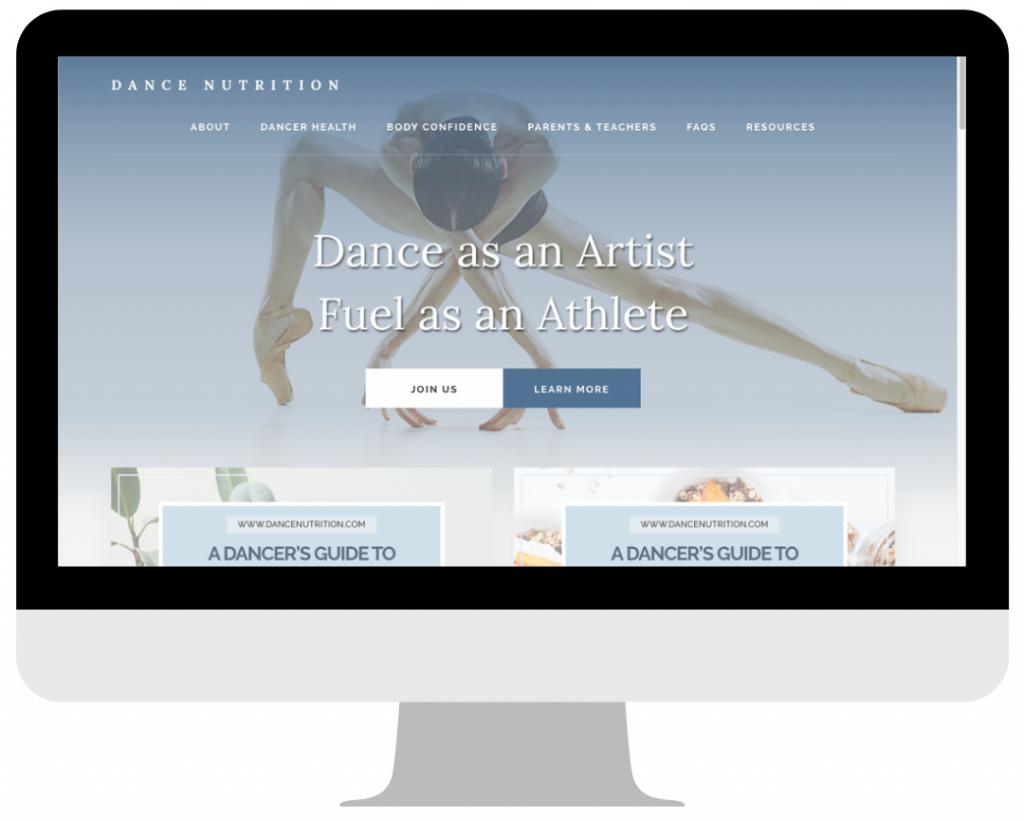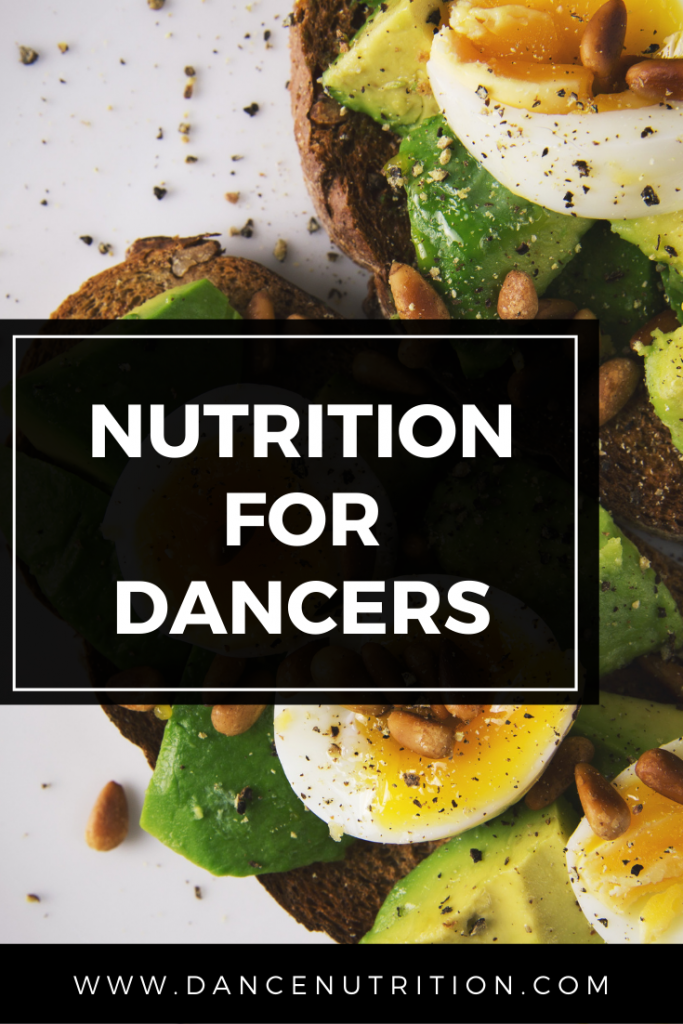As a dancer, I want to be healthy and stay in shape, but I have so many cravings and zero willpower around food! What are some tips for dancers to eat a healthy and balanced diet?
In my work as a dietitian for dancers, I often hear from dancers striving for a “perfect” diet to unlock their performance potential and reach their body goals. The perfect diet, however, doesn’t exist and as a goal, risks unsupportive eating habits. Dancers are especially vulnerable to messaging that encourages extreme behaviors in an attempt to manipulate their body’s weight, shape, and size. Clean eating is one example that masks restrictive eating that ultimately leads to injury and burnout.
A common misconception among dancers is that a “healthy” diet means eating the “right” foods and avoiding the “wrong” (or “bad”) foods to achieve an “ideal” body or an ideal style of eating. To best address the role of nutrition in a dancer’s diet, let’s look at the most common questions that I receive as a dance nutritionist.
TL:DR: As a dancer, behavioral changes and mindset shifts are necessary for rebuilding your relationship with food and your body. Working with a Registered Dietitian Nutritionist is encouraged to gain a personalized approach. A licensed professional will help you unlock the power of meal planning, and macronutrient optimization, and help enhance your body’s utilization of micronutrients.
Question 1: What types of food should dancers eat?
To preface the types of foods recommended in a dancer’s diet, let’s address a dancer’s calorie needs. Calories provide the energy needed to perform and sustain basic metabolic functioning. Unfortunitely, many dancers underestimate their calorie needs— eating too few calories and risking Relative Deficiency in Sport (more about this here) a syndrome of metabolic consequences resulting from caloric and nutrient inadequacy. To learn more about how many calories a dancer needs in a day, check out this article.
For dancers, a balanced diet incorporates meals and snacks that include all three macronutrients: carbohydrates, protein, and fats. This ratio, or what I like to call a dancer’s fuel mix, is critical to their meal plan.
A dancer’s fuel mix: nutrients for performance
Carbohydrates (goal: 55-60% of a dancer’s diet) are the preferred energy source for a dancer’s muscles and brain. Generally, dancers can benefit from boosting their intake of complex carbs— those found in plant-based foods like whole grains, fruits, veggies, legumes, nuts, and seeds. Whole grains, such as rice, oats, farro, bulgur, and barley are particularly high in iron, zinc, and vitamin B12. Though technically a seed, quinoa is another great source of complex carbohydrates. Check out this article to learn more about optimizing your carbohydrate choices.
Protein (goal: 12-15% of a dancer’s diet) supports muscle repair and rebuilding. Protein is found in both animal- and plant-based foods. Animal-based proteins like fish, chicken, eggs, cheese, milk, and yogurt are considered high in biological value, providing all essential amino acids for anabolic growth. Vegetarians and vegans can obtain all essential amino acids from plant-based diets but this requires proper planning. Even for plant-based dancers, an abundance of protein-rich foods is becoming more accessible than ever before. Legume-based pastas, pseudo-cereals (quinoa and buckwheat), and ancient grains (farro) are examples. Here’s an article that dives deeper into a dancer’s protein requirements.
Fat (goal: 30% of a dancer’s diet) is essential for a dancer’s active body— hormonal balance, bone health, mealtime satisfaction, and fullness are just some examples. As a bonus, heart-healthy unsaturated fats predominantly found in oils (olive and canola), fatty fish (salmon, tuna), avocados, nuts, seeds, and nut/seed butter help to alleviate inflammation and promote muscular repair. Here’s an article to uncover the myths surrounding this essential nutrient.
The micronutrients are essential vitamins and minerals like calcium, Vitamin D, iron, B12, and zinc. To learn more about these nutrients, sign up for my complimentary free trial— it outlines a dancer’s micronutrient needs.
Question 2: How much should a dancer drink during the day?
Hydration is critical for dancers. Generally, aim for 3 liters of water daily, but individual needs will vary and increase if dancing for longer than 60 minutes or in hot and humid environments. Since feelings of thirst can easily go unnoticed by dancers, plan for a proactive approach. A reusable water bottle is a great way to remember to hydrate regularly. Aim to refill it 3 times throughout the day, and optimize your hydration by adding a salty snack (like pretzels) and a simple carbohydrate (like fruit). To learn more about a dancer’s hydration needs, read this article.
Question 3: How can I banish cravings?
Embrace your cravings! Cravings are one way in which your body communicates its needs. If you’re craving carb-rich food, it could mean you’re restricting necessary carbohydrates elsewhere in your meal plan. Here’s a helpful article to understand and productively navigate intense cravings.
If you’re eating sufficiently but still experiencing intense cravings, evaluate your relationship with food. Labeling food as “bad,” “unhealthy,” or “junk” can further drive desire to eat these very foods. Rather than running from your cravings, enjoy them mindfully and as part of a well-rounded meal plan. If you’re feeling guilty when eating such foods, read this.
Question 4: How Can I Become The Healthy Dancer®?
As a former professional dancer, I get it. We balance the high demands of our art with industry pressures that promote unrealistic ideals around food, body, and work ethic. My experiences in both pre-professional and professional dance life provide me with a deep insight into your lifestyle and performance goals.
The Healthy Dancer® offers free and paid resources to help dancers build sustainable habits. Start your journey here to evaluate your relationship with food. You’ll receive a free workbook to start the work. From there, enroll in my complimentary free trial to uncover your nutrient needs as a dancer.
Dancers, dance educators, and parents can access information and guides about fueling your dance performance. But the importance of dance nutrition goes beyond our plate. You can access over 20 free downloadable guides on topics like Dancing In College, Emotional Eating, Injury Recovery, and Healthy Snacking.
For more support with a budget-friendly price tag, move through The Healthy Dancer® Survival Guide, a series of downloadable ebooks on topics including:
To take it a step further, join The Healthy Dancer®. I designed this program as a 6-24+ month membership for dancers to support their performance and health goals. The program includes self-study and 1:1 coaching. Additional group training happens throughout the year with The Healthy Dancer® Summer Intensive, The Healthy Dancer® Winter Intensive, and The Healthy Dancer® Mastermind.

